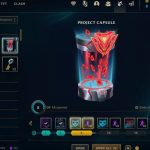Are you looking to up your game in League of Legends? Unlocking the secrets of micro, macro, and rotations can help you take your play to the next level.
In this article, we’ll explore how understanding these strategies will help you master the mechanics and develop your skills.
So let’s get started!
Key Takeaways
- Micro strategies focus on individual gameplay mechanics and decision-making, such as item selection, wave management, minion placement, and prioritizing items.
- Macro strategies involve team-oriented tactics and coordination, including teamfighting tactics, unit control, decision-making, and using terrain for advantage.
- Rotational strategies emphasize wave management, objective control, map control, cohesive unit movement, and minimizing risks while pressuring objectives.
- Mechanics of both micro and macro strategies involve timing decisions, map control, unit placement, coordinating objectives, predicting teamfight duration, placement and positioning for objectives, reactive and proactive playstyles, wave management, split pushing, rotations, and creative solutions for team success.
Understanding Micro Strategies
Micro strategies are essential to success in League of Legends, so it’s important to understand them.
Item selection and wave management are two key components when mastering micro strategies. Knowing when and where to place minions, as well as which items to prioritize will give you an edge over your opponents.
You must also be aware of the enemy’s position on the map and make sure you’re not overextending. Proper timing of abilities is also important – use them at the right time for maximum impact!
Lastly, practice makes perfect: try out different builds in custom games or against bots until you become more familiar with micro strategies.
Exploring Macro Strategies
When it comes to macro strategies in League of Legends, there are two main components you need to understand: teamfighting tactics and unit control.
Teamfighting tactics involves understanding how your team should work together and how you can use your abilities to outplay an enemy team during a teamfight.
Unit control is the art of controlling not only your own units but also the enemy’s units and using them to gain an advantage.
Both these skills are important for playing at a higher level, so let’s explore them further.
Teamfighting Tactics
Teamfighting requires coordination and quick decision-making, so it’s essential for teams to practice together often. Having a competition mentality and team coordination are key components of success. A good teamfight strategy involves being mindful of the enemy team’s objectives, positioning, and rotations. Here is a table breaking down the aspects of teamfights:
| Objective | Positioning | Rotations |
|---|---|---|
| Know where to focus your efforts | Use terrain to gain an advantage | Move quickly between lanes or objectives |
| Avoid getting engaged in unfavorable fights | Utilize vision control strategically | Ward around potential flanks or backdoors |
| Attack when you have an advantage of numbers or items | Have champions ready to initiate or disengage combat | Take note of enemies’ jungle pathing and react accordingly |
Unit Control
Controlling individual units in League of Legends is a skill that requires practice and strategy to master. Unit control involves managing the positioning and timing of your units to maximize their combat effectiveness.
Here are five key points to consider when mastering unit control:
- Keep track of enemy units and anticipate how they will move.
- Use terrain features such as walls, cliffs, or jungle brush for strategic positioning.
- Take advantage of attack range and unit speed differences when engaging in combat.
- Develop good reflexes so you can react quickly to changes on the battlefield.
- Make split-second decisions about unit positioning and combat timing.
Examining Rotational Strategies
You’ll need to understand rotational strategies if you want to become a successful League of Legends player. Rotations are the cornerstone of success for many teams, as they involve wave management and objective control. Knowing when and where to rotate can make all the difference in a team fight or skirmish.
It’s important to pay attention to your surroundings and be mindful of what your opponents are doing. Rotations also help establish map control, allowing you to pressure objectives more effectively while minimizing risk. The key is to have clear communication between teammates and move as one cohesive unit with a common goal in mind: victory!
If you can master rotational strategies, you’ll be on your way towards becoming an unstoppable force in League of Legends!
Mastering the Mechanics of Micro Strategies
You’ve already come a long way in mastering rotational strategies, but now it’s time to hone your skills to the next level by focusing on micro strategies.
Mastering timing decisions, map control, and unit placement are essential for success. With some practice and dedication, you’ll be able to make decisions that maximize your efficiency and lead to victory!
Timing Decisions
Making timing decisions correctly is essential to success in League of Legends. You need to consider how much time you have to complete your objectives, when and where to buy items, when the enemy is most vulnerable, when teamfights are occurring, and when it’s best for you to move around the map.
Coordinating objectives with other players on your team is key in order to maximize the effectiveness of each decision.
Knowing what items you should purchase as well as when and where can give you an edge over your opponents.
Paying attention to when enemies are vulnerable can help you get advantages in fights or take objectives without resistance.
Doing your best to predict how long teamfights will last can help make sure that you don’t miss out on any important moments during a match.
Keeping track of your movements around the map so that you’re always in position will help ensure that no opportunities are wasted while playing League of Legends.
Map Control
Now that you’ve got a better grasp of timing decisions, it’s time to move on to the next important topic: map control.
Map control is all about positioning tactics and lane aggression, and it can be very difficult for even experienced players to master. Being aware of where your opponents are on the map at all times is key.
This means constantly assessing your team’s position in relation to theirs and adapting accordingly. Utilizing proper lane aggression is also essential, as it can often create openings for objectives or kills.
As a general rule of thumb, focus on taking fights when you know that your team has an advantage – either through numbers or strategic positioning. With practice, you’ll find that controlling the map leads to more successful strategies and victories!
Unit Placement
Positioning your units properly is essential for successful map control and can give you an advantage in battles. To ensure your success, here are some key points to keep in mind when placing your units:
-
Pay attention to the terrain: Knowing which areas of the map provide cover or have advantageous high ground can help you position your units better.
-
Understand wave management: Keeping track of how enemy minions are pushing into lanes will inform where you place your own units.
-
Communicate with allies: Coordinating with teammates about where they’re positioning their characters and which objectives they’re taking will help create a strategy that takes advantage of unit placement.
-
Utilize mobility items: When engaging in teamfights, using mobility items like Flash or Teleport can allow you to get into advantageous positions quickly.
-
Be aware of vision control: Understanding where wards are placed allows you to make better decisions on where to move your units safely without being seen by enemies.
Unit positioning and wave management are key components of successful map control!
Developing the Mechanics of Macro Strategies
| Understanding the mechanics of macro strategies is key to unlocking the secrets of micro, macro, and rotations in League of Legends. Movements patterns like placement and positioning are essential when it comes to taking objectives on the map. | Positioning Basics | Movement Patterns |
|---|---|---|
| Wave Management | Reactive Playstyle | |
| Map Vision | Proactive Playstyle | |
| Ward Placement | Split Pushing | |
| Teamfighting | Rotations |
All these strategies require you to think outside of the box and come up with creative solutions that will help your team win. By mastering these concepts, you can become a much more successful player in League of Legends.
Perfecting the Mechanics of Rotational Strategies
Mastering rotational strategies requires thinking outside the box and coming up with creative solutions that help the team succeed. Understanding key concepts like wave management, harassing tactics, and smart objective control is essential. Here are 5 key points to consider:
-
Utilize harassment tactics when necessary. Attack enemy players in a safe area of the map to gain an advantage while avoiding unnecessary damage.
-
Constantly be aware of wave management. Push waves when needed instead of sitting back idly.
-
Take control of objectives like dragons or Baron Nashor quickly and efficiently. Don’t fall behind on these objectives!
-
Use crowd control skills such as stuns or snares during team fights and skirmishes for maximum effectiveness.
-
Always stay one step ahead by predicting opponents’ moves before they happen.





